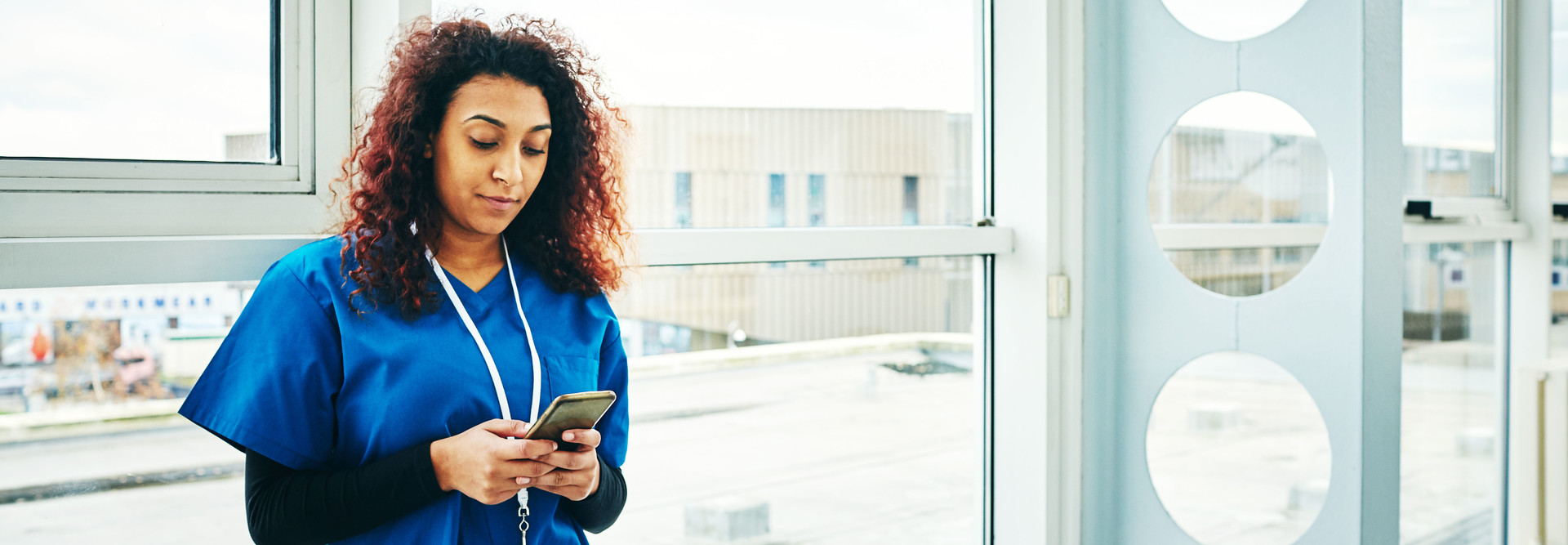Healthcare Mobility Initiatives Support Better Communication and Care
The tools greatly benefit workflows. Previously, a nurse in a patient’s room who needed to confer with a physician had to stop everything to make that communication happen by walking to the nurses’ station to page the physician — and then wait at the station for a call back or return to the patient and possibly miss the physician’s return call.
Likewise, a nurse needing assistance might have to stick his or her head outside the patient’s door and shout for help.
Now, bedside nurses can simply pull out the mobile devices from their pockets to call or text the physician directly. “Clinical mobility has improved by leaps and bounds the way we provide care for patients,” Jennings says.
This clear and timely communication leads to faster interventions and fewer errors. More than 60 percent of nurses using clinical mobility report reduced medication administration errors, according to the Zebra study.
These capabilities are even more vital during the pandemic as hospitals set up medical tents and mobile testing facilities. “With COVID-19, hospitals need to provide communication inside and outside their four walls,” Jennings says.
MORE FROM HEALTHTECH: The Zebra TC51-HC is a perfect prescription for mobility.
Having patient information and communication capabilities in the palm of their hands allows nurses to be more productive — and, ultimately, more satisfied with their jobs because they’re less burdened with time-consuming tasks that don’t directly contribute to patient care.
“That work creates gaps in efficiency and contributes to burnout,” Jennings says.
Mobile Tech Evolves to Meet Nurses’ Needs
In their early incarnations, clinical mobility devices mostly allowed clinicians to make phone calls. Later, they also enabled secure text messaging.
Today, their capabilities have expanded: Clinicians can use them to access electronic health records, scan medication, capture images and label blood samples.
The latest devices provide benefits that address pandemic-related concerns by helping respond to skyrocketing demand for telehealth via video chat and reducing the need for personal protective equipment. Mobile devices can also be used for proximity detection and contact tracing.
“These devices are getting smarter to help caregivers provide safer care, and to keep them safer as well,” Jennings says.
Brought to you by:













